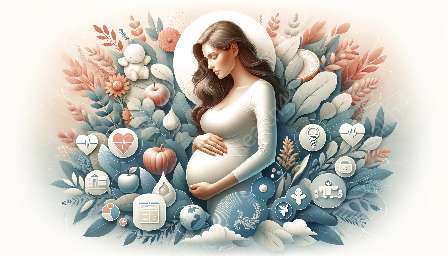Conception marks the beginning of a remarkable journey known as fetal development, which encompasses a series of stages that ultimately lead to the birth of a baby. This topic cluster delves into the intricate process of prenatal growth, highlighting the key milestones that occur during pregnancy.
Conception and Early Development
The journey of fetal development begins with conception, when a sperm fertilizes an egg, forming a zygote. This single-celled entity contains the genetic material that will determine the baby's traits. The zygote undergoes rapid cell division, forming a blastocyst, which then implants itself in the uterine lining.
Over the next several weeks, the embryonic stage unfolds as the cells continue to divide and differentiate into various types of tissues and organs. By the end of the embryonic period, major organs such as the heart, brain, and lungs begin to take shape, laying the foundation for the subsequent stages of fetal development.
First Trimester: The Foundation Takes Shape
The first trimester is a critical period in fetal development, characterized by the formation of essential body structures and organs. During this stage, the baby undergoes rapid growth, and the mother may experience significant physical and hormonal changes.
By week 6, the embryo is about the size of a lentil and the heart starts beating. Towards the end of the first trimester, the developing fetus achieves many significant developmental milestones, including the formation of limbs, facial features, and vital organs.
Second Trimester: Growing and Thriving
As the second trimester begins, the fetus enters a phase of rapid growth and maturation. By this time, the external features become more defined, and the baby's movements become evident. Expectant mothers often experience the joy of feeling their baby's first kicks and movements during this stage.
During the second trimester, the fetus undergoes significant development of sensory organs, including the eyes, ears, and taste buds. The baby's skin also starts to develop a protective waxy coating known as vernix caseosa.
Third Trimester: Nearing Birth
The final trimester of pregnancy is marked by continued growth and preparation for birth. The fetus further matures, gaining body fat and developing the ability to breathe independently. During this stage, the baby's brain and nervous system undergo rapid development, preparing for life outside the womb.
As the due date approaches, the baby assumes a head-down position in the mother's pelvis in preparation for labor and delivery. The mother may experience increased discomfort due to the baby's size and position, along with other physical symptoms signaling that labor is approaching.
Conclusion: A Miraculous Journey
The stages of fetal development from conception to birth represent a miraculous and awe-inspiring process. Each phase is intricately orchestrated to provide the foundation for the healthy growth and development of the baby. Understanding these stages can offer insight into the amazing journey of pregnancy and the creation of new life.


